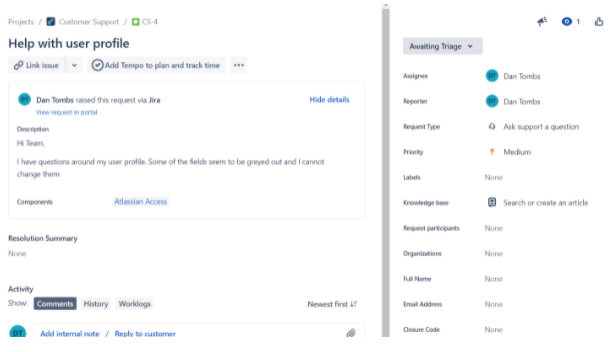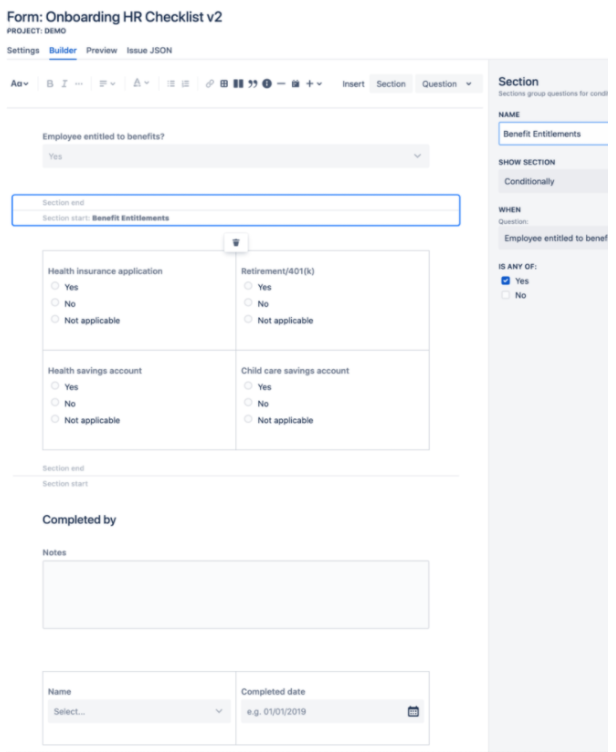The History of Jira
Jira Service Desk (JSD) was created by Atlassian after research showed customers using Marketplace apps to turn their software projects into makeshift service desks for internal users. After recognising their power, Atlassian used these apps to create the groundwork for Jira Service Desk as we know it today.
JSD offered familiarity to users. It utilised the power of Jira’s core platform with workflows and custom fields to provide an adaptable, bespoke platform to suit different ways of working. Not long after, Pink Elephant verified JSD as having the capability to house the four main processes of ITIL – Incident, Problem, Request, and Change Management. JSD also brought native no-code automations to the application for the first time.
JSD allowed service desk teams to deflect tickets with a knowledge base. Linking to a Confluence space allowed agents to label Confluence pages with keywords so they would show on the portal as customers were creating requests. Similarly, agents could respond to tickets with links to these articles to resolve requests quicker by pointing the customer in the right direction.
Following the launch of the product, Marketplace vendors were keen to add to the functionality of JSD with new apps. This led to the developing of some of the best apps known today, such as Assets, ProForma for Jira, and Deviniti’s Cross Project Queues and Extensions for JSD. Assets allowed JSD to offer a fifth common process in the ITIL framework. ProForma added the ability to dynamically adapt request forms, whilst the Cross Project Queues allowed teams to easily manage multiple projects from a single pane of glass. Alongside these focused apps, Automation for Jira (A4J) became an essential part of any service desk due to its powerful no-code automation abilities. A4J allowed admins to configure rules for almost anything, the most common being automated approvals, creating scheduled tickets, editing issues or sending webhooks/messages to external applications like Slack or Teams.
Skip forward a few years, and Atlassian developed its Cloud platform, acquiring several companies to aid this. Opsgenie, an alert and event management application, was bought in September 2018, followed by Halp, a ChatOps service desk app, in May 2020 and finally, Assets (formerly known as Insight in August 2020).
Atlassian first saw the benefits of a combined single application for all ITSM tools with JiraOps. JiraOps was a half-and-half measure of Opsgenie and JSD. While this may not have stayed around long, it showed the true benefit of a single service management application that gave agents a single efficient application to work from while the tools did the leg work behind the scenes.

Jira as we know it
Later down the line, Atlassian rebranded JSD as Jira Service Management. As well as continuing to push Cloud applications, Atlassian has improved existing features like the new queue management system, which allows agents to action tickets right from the queue. Also, the new issue view, which has created a slicker Jira ticket UI, allows agents to see the most relevant information about an issue without being overwhelmed.

A4J has become native functionality in Jira and has continued to develop new actions and integrations. Opsgenie’s features (like schedules, services, and major incident management) are now available in JSM.

Assets has become integrated, resulting in a more straightforward setup between Assets and service projects by allowing easier custom field creation and displaying the Assets objects on the linked tickets more clearly. Assets queries are also now part of JQL, bringing the whole search under one roof.
Atlassian acquired ThinkTilt, the maker of ProForma, in April 2021. The dynamic forms and vast library of templates will enable service managers to create and work with requests quickly. Request forms enable agents to efficiently receive all the information the customer requires to complete an item of work. Dynamic forms aid agents in collecting information for more complex requests whilst removing the need for additional custom fields. They also keep request forms clean and guide the customer through the relevant parts.

Atlassian has continued to improve integrations with its other products and third-party applications. With Confluence, you can now have multiple knowledge bases feeding into the same service project. This allows different pools of knowledge that may be owned and maintained by multiple teams to service users on the same portal. Atlassian has also strengthened the link with GitHub, GitLab, and of course, Bitbucket. The improved integration provides a more seamless development change process with auto approvals. The development platforms also saw improvements from Opsgenie, so that when incidents occur, you can look over your release timeline for the affected service and see what may have caused it. This information, including Opsgenie’s services and major incident management, has been rolled out to the new JSM projects.
A simple yet effective integration is the Halp ChatOps tool, which allows Slack messages to be converted into tickets using emojis. The next time a colleague Slacks you, instead of raising a ticket, you can convert it and keep it up to date with comments using a thread. You can even create internal comments for other agents by using a emoji and, finally, resolve the ticket with a ✔️. While many service managers encourage the use of the portal as it can help with ticket deflection and the collection of vital data, we just cannot get away from those pesky side messages to agents.
What's Next?
Enough of the now, what’s coming up? Let’s review the Atlassian roadmap for JSM.
Changes
One new change that’ll be coming for Jira Service Management in 2023 is the ability to empower operations and support teams to deliver exceptional support at scale, fast, with Atlassian’s new AI-powered virtual agent technology, Virtual Agent for Jira Service Management.
Updates
- In 2023, you’ll be able to restrict app access to specific Atlassian instances, Confluence Spaces, or Jira Projects using the upcoming “App Data Access Controls” update.
Conclusion
Jira Service Management is maturing and has come a long way since its conception as JSD. Acquisitions and deep standalone integrations confirm Atlassian’s commitment to continuously improving the platform. It has greater flexibility to adapt to every company’s requirements while providing the best opportunity for new businesses to get started with Pink Elephant’s verified processes.
Atlassian is developing features to integrate all of its applications into one view to provide a powerful single pane of glass for agents, with the aim of making it more efficient by having less context switching between apps. JSM remains a strong competitor within the industry, and implementing the upcoming roadmap will only advance Atlassian’s success.
Published: Jun 23, 2021
Updated: Mar 25, 2024


